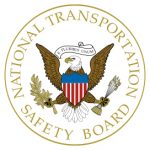
 On February 4, 2018, southbound Amtrak train 91, operating on a track warrant, diverted from the main track through a hand-thrown switch into a siding and collided head-on with stationary CSX Transportation local freight train F777 03 on the CSX Columbia Subdivision in Cayce, S.C.
On February 4, 2018, southbound Amtrak train 91, operating on a track warrant, diverted from the main track through a hand-thrown switch into a siding and collided head-on with stationary CSX Transportation local freight train F777 03 on the CSX Columbia Subdivision in Cayce, S.C.
The engineer and conductor of the Amtrak train died as a result of the collision and at least 92 passengers and crewmembers on the Amtrak train were transported to medical facilities. The engineer of the stopped CSX train had exited the lead locomotive before the Amtrak train entered the siding, ran to safety, and was not injured. The conductor of the CSX lead locomotive saw the Amtrak train approaching in the siding and ran to the back of locomotive. The conductor was thrown off the locomotive and sustained minor injuries.
The normal method of train operation on the subdivision was a traffic control system with wayside signals. Signal indications authorize movement in either direction. On the day before the accident, CSX signal personnel suspended the traffic control signal system to install updated traffic control system components for implementing positive train control (PTC) on the subdivision. During the suspension, scheduled to last through February 4, 2018, dispatchers would use track warrants to move trains through absolute blocks in the work territory.
National Transportation Safety Board (NTSB) investigators inspected the track structure, signal system and mechanical equipment; collected and are examining records for operations, signal systems, mechanical equipment, and track and engineering; and interviewed train crewmembers, train dispatchers and other personnel from CSX and Amtrak. In addition, investigators are reviewing the emergency response to the accident. Members of the NTSB investigative team traveled to Jacksonville, Fla., to investigate the dispatching aspects of the accident, to test the CSX signal system and to conduct additional interviews.
While on-scene, NTSB investigators located and removed the undamaged event data recorder from the destroyed Amtrak locomotive. The event data recorder was successfully downloaded and an initial review of the data revealed the following information:
- From the train’s last stop, the maximum speed reached 57 mph, which was below the 59 mph limit allowed under signal suspension rules.
- About 7 seconds before the end of the recording, the train was moving at 56 mph and the train’s horn was activated for 3 seconds.
- The brake pipe pressure began decreasing 2 seconds later.
- The following second, the throttle transitioned from full throttle to idle, while the train was moving at 54 mph.
- The engineer induced emergency braking one second later, while the train was moving at a speed of 53 mph.
- The recording ended 2 seconds later, as the train’s air braking system was approaching maximum braking effort and the train’s speed was 50 mph.
The Amtrak locomotive’s forward-facing video recorder hard drive was recovered and downloaded. The initial review of the recording indicated that it ended prior to the collision. NTSB engineers are attempting additional forensic efforts to determine if additional information can be recovered. Other investigative efforts included the download of information from the forward-facing video recorder and the extraction of the event recorder from the CSX lead locomotive.
Parties to the investigation include the Federal Railroad Administration, CSX, Amtrak, Brotherhood of Locomotive Engineers and Trainmen; International Sheet Metal, Air, Rail, and Transportation Workers-Transportation Division; Brotherhood of Railroad Signalmen, and the State of South Carolina Office of Regulatory Staff.
In response to this accident, the NTSB issued an urgent recommendation requesting that the Federal Railroad Administration issue an emergency order providing instructions for railroads to follow when signal suspensions are in effect and a switch has been reported relined for a main track.
***
These are the preliminary findings of the NTSB and will be either supplemented or corrected during the course of the investigation.

Related News
- SMART-TD Applauds FRA and DOT for Strengthening Cross-Border Rail Safety Protections
- Regional Training Seminars coming to St. Paul, Baltimore in 2026
- Transit Funding Boost Proposed by SMART-TD Backed Bill
- California SMART-TD Brother Killed on the Job
- Union Mourns the Loss of Brother Charles Harrison
- FRA Issues Grade-Crossing Safety Advisory
- Amtrak To Give SMART-TD Members Holiday Bonuses
- SEPTA Strike Avoided: Strong Agreement Secured
- Posthumous Retirement Ceremony Honors Lost Brother
- SMART-TD: Built by Members, Driven by Your Voice